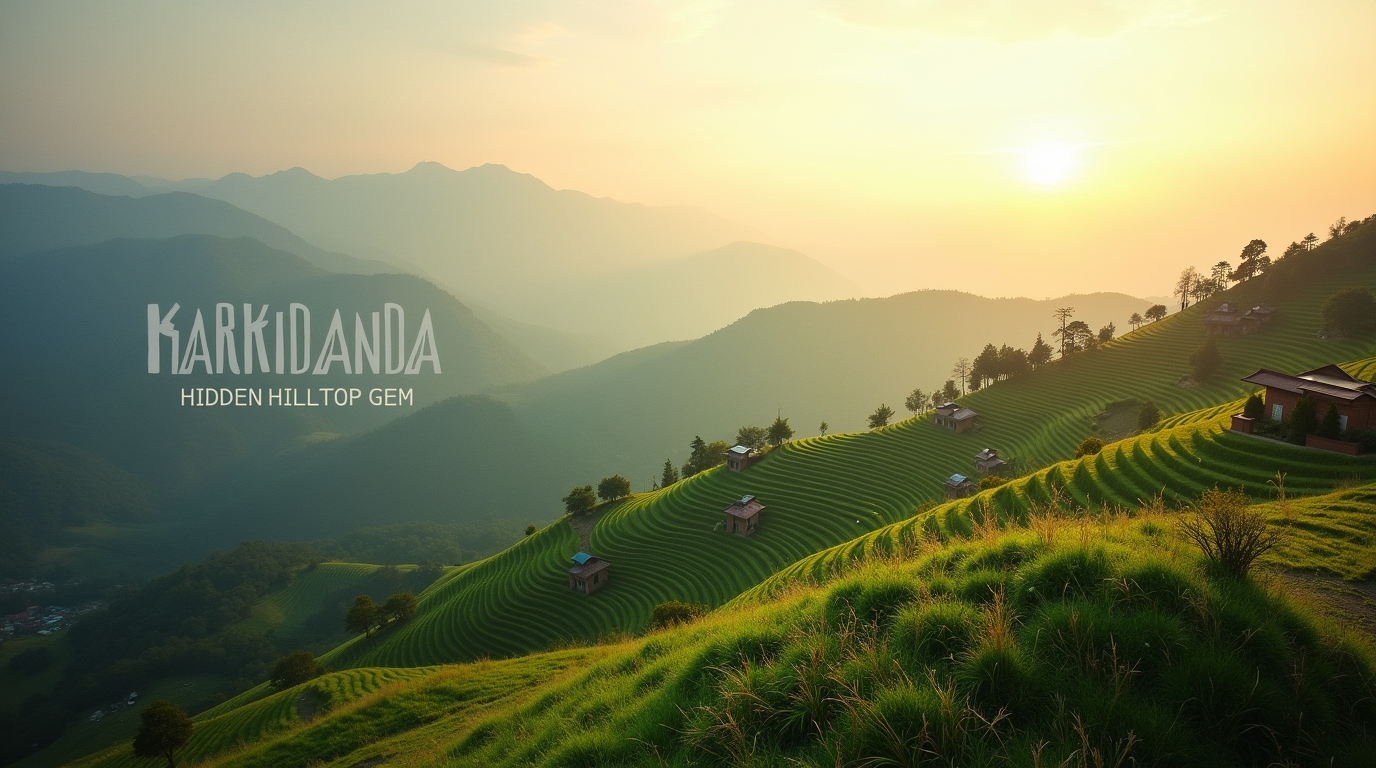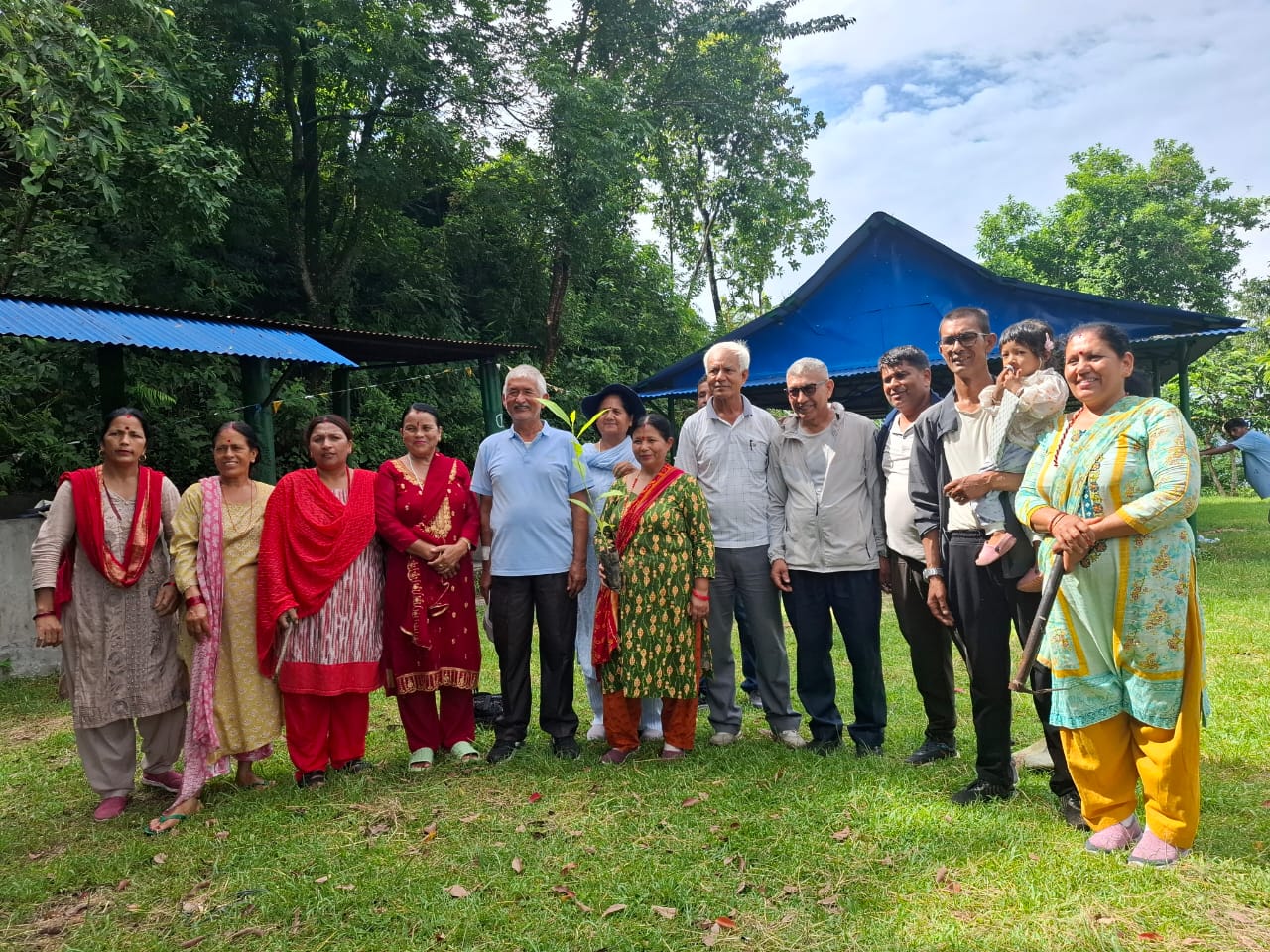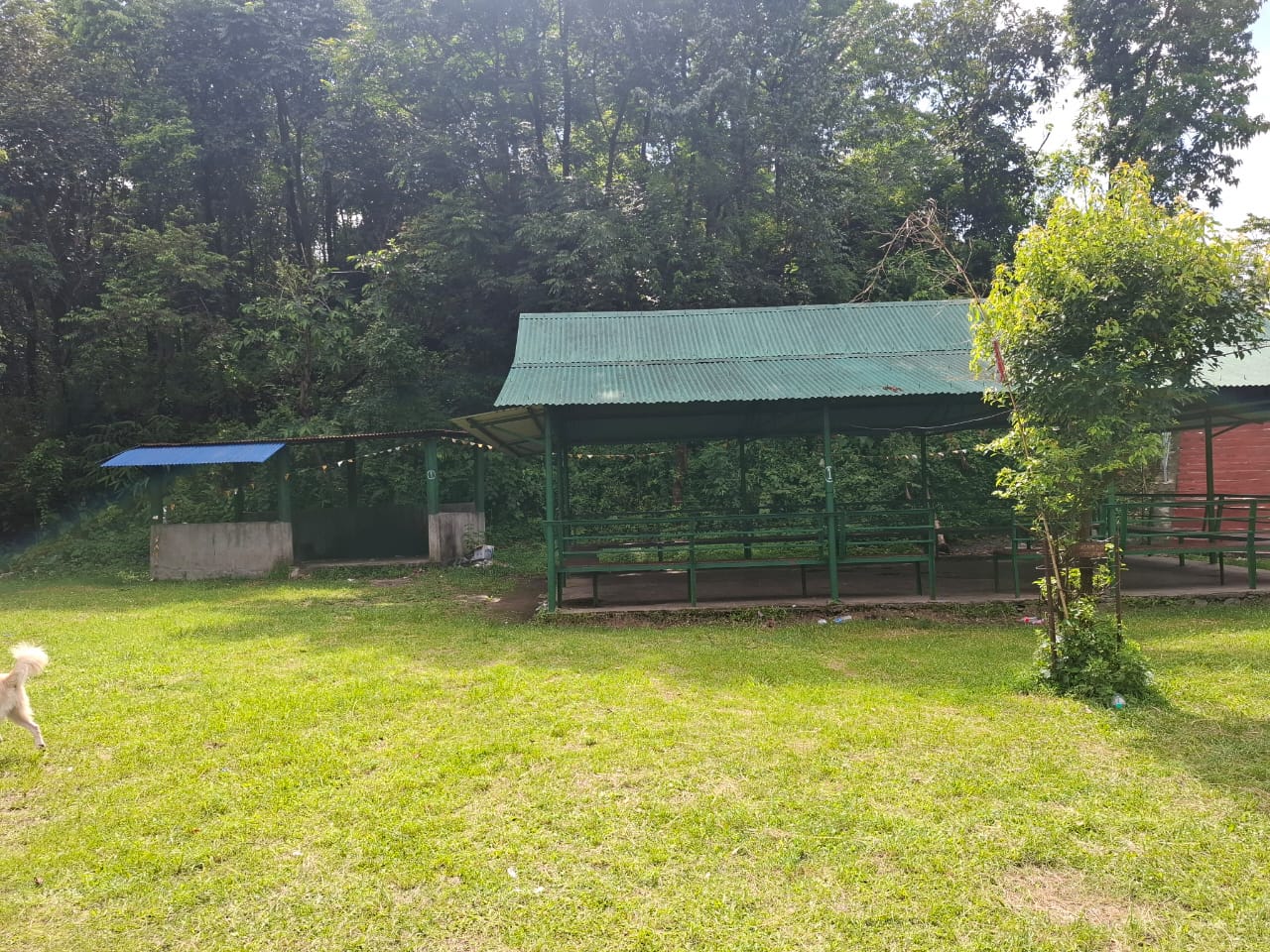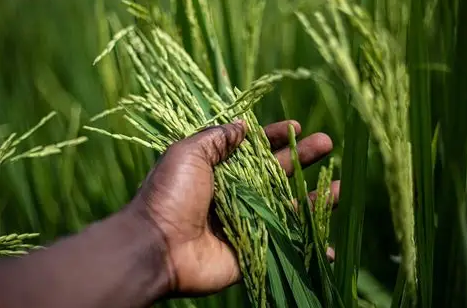Latest Articles

A Photographer’s Paradise: Capturing KarkiDanda’s Hidden Beauty
Tucked away above the Pokhara valley, KarkiDanda is more than just a scenic hilltop—it’s a photographer’s dream. With panoramic views, lush greenery, and a rich tapestry of village life, this hidden gem offers endless opportunities to capture nature, culture, and moments that tell a story.
Golden Hour Magic
For photographers, the early morning and late afternoon light are golden opportunities:
Sunrise Over the Hills – Watch mist rolling across terraced fields as the sun casts golden hues on distant peaks.
Sunset Serenity – Capture the valley bathed in warm light, with shadows playing across the slopes.
Sky Palette – The changing colors of the sky, from soft pink to vibrant orange to deep indigo, create stunning backdrops for every shot.
Even on cloudy days, the diffused light enhances textures and colors, making every shot unique.
Nature in Every Frame
KarkiDanda’s landscape is alive and ever-changing:
Terraced Farms – Symmetrical patterns of crops like millet, maize, and potatoes provide geometric beauty.
Wildflowers and Forests – Colorful blooms, bamboo groves, and dense green forests add vibrancy and texture.
Himalayan Vistas – The distant Annapurna and Machhapuchhre ranges offer breathtaking wide-angle opportunities.
Macro photographers will also find delight in tiny details: dew on leaves, butterflies fluttering, bees on flowers, or birds perched among branches. Nature here is dynamic, rewarding patience and observation.
Capturing Village Life
What makes KarkiDanda unique is its authentic rural culture:
Traditional Homes – Stone and timber houses showcase architectural charm and rustic textures.
Festivals and Rituals – If your visit aligns with local celebrations, you can photograph vibrant colors, music, and dances.
Daily Life – Farmers working in the fields, children playing, elders tending gardens — these candid moments tell real stories of life in harmony with nature.
Including people in your frames adds scale, warmth, and storytelling depth, transforming photographs into living narratives.
Best Spots for Photography
While the entire ridge is photogenic, a few spots stand out:
Terrace Overlook – Ideal for panoramic sunrise and sunset shots.
Forest Pathways – Capture light filtering through leaves, creating natural frames.
Village Corners – Authentic architecture and daily life scenes.
Hilltop Viewpoints – Wide-angle landscapes including valleys and distant mountains.
Rivers and Streams – Small water flows glinting in sunlight, perfect for reflective and long-exposure shots.
Pro tip: Walk a little off the main paths—hidden corners often provide the most unique and untouched compositions.
Photography Tips at KarkiDanda
Timing is Key – Early morning and late afternoon provide the best natural light.
Include Human Elements – Locals or travelers in your shots add scale and storytelling.
Respect Privacy – Always ask permission before photographing people.
Experiment with Angles – Shoot from terraces, low angles, or elevated viewpoints for unique perspectives.
Play with Light – Mist, shadows, and sun rays can transform ordinary scenes into magical compositions.
KarkiDanda rewards patience—spend hours observing subtle changes in light, wind, or wildlife, and you’ll be rewarded with truly unique shots.
Beyond Photography
While KarkiDanda is a photographer’s paradise, it also offers experiences that enrich your creative journey:
Sketching and Painting – Artists can find inspiration in terraces, mountains, and village scenes.
Meditation in Nature – Quiet corners allow reflection and mindfulness, enhancing the ability to capture emotion in photography.
Eco-Tours – Participate in sustainable farming or tree planting to connect deeper with the land.
This is a place where creativity and nature converge, offering more than just visual appeal.
Conclusion
KarkiDanda is more than a destination—it’s a living canvas for photographers, artists, and nature lovers alike. With its combination of natural beauty, authentic village life, and stunning Himalayan backdrops, every visit offers new inspiration.
For those who see the world through a lens, KarkiDanda is a paradise waiting to be captured, one frame at a time.

The Healing Power of Nature: Why We Need the Outdoors More Than Ever
In today’s fast-paced world, we often forget the profound connection humans have with nature. From lush forests and flowing rivers to mountains and meadows, the natural world is not just a backdrop for life — it’s a source of healing, inspiration, and balance.
Nature and Mental Health
Studies show that spending time in natural environments reduces stress, anxiety, and depression. Even short walks in a park or time spent among trees can:
Lower cortisol levels (stress hormone)
Improve mood and emotional wellbeing
Boost creativity and focus
The simple act of listening to birdsong or feeling a gentle breeze can reset our minds in ways no screen or device can replicate.
The Beauty of Seasonal Changes
Nature is always evolving, and each season brings its own wonder:
Spring: Fresh blooms, chirping birds, and renewal of life.
Summer: Vibrant greenery, long sunny days, and energetic wildlife.
Autumn: Golden and crimson leaves, crisp air, and the sense of change.
Winter: Quiet landscapes, frost-kissed mornings, and reflective stillness.
Observing these cycles teaches us patience, adaptability, and appreciation for life’s rhythms.
Nature as Inspiration
Artists, writers, and thinkers throughout history have turned to nature for inspiration. The colors, patterns, and harmony in forests, rivers, and mountains fuel creativity. Whether you are a painter, photographer, or writer, stepping into the outdoors awakens new ideas and perspectives.
Eco-Conscious Living
Connecting with nature also encourages responsible living. Simple actions like planting trees, reducing waste, and protecting wildlife habitats can make a lasting impact. Respecting nature isn’t just ethical — it ensures future generations can experience its beauty and benefits.
Ways to Reconnect with Nature
You don’t need to travel far to experience the outdoors. Here are simple ways to bring nature back into your life:
Take daily walks in parks or green spaces
Practice gardening or plant indoor greenery
Go for hikes, nature trails, or camping trips
Observe wildlife or birdwatch
Unplug from devices and spend quiet time outdoors
Even small, consistent exposure can improve mental clarity, physical health, and overall happiness.
Nature is more than scenery — it is a living, breathing companion that nurtures our mind, body, and soul. In every rustling leaf, flowing stream, and mountain peak lies a lesson, a moment of calm, and a reminder that life is interconnected.
By taking the time to step outside, observe, and care for the environment, we not only heal ourselves but also protect the world that sustains us.
Embrace nature. Listen, observe, and let it renew your spirit.

A Hidden Hilltop Haven for Nature, Culture, and Community
When most travelers think of Pokhara, the lakeside buzz and Annapurna’s grandeur often come to mind. Yet, tucked quietly away from the city’s hustle lies KarkiDanda — a hilltop destination that beautifully blends natural beauty, cultural heritage, and community spirit. More than just a picnic spot, it’s a place where visitors discover the authentic soul of Nepal.
Where Nature Paints the Horizon
Perched above the valley, KarkiDanda offers panoramic views of Pokhara, with the Annapurna and Machhapuchhre ranges framing the skyline.
Sunrise & Sunset Magic – Watch the sun rise over Himalayan peaks or set in golden hues over the valley.
Seasonal Beauty – From spring wildflowers to winter clarity, each visit brings a different mood and scenery.
Fresh, Peaceful Atmosphere – Surrounded by forests and farms, it’s a refreshing escape from crowded tourist hubs.
A Community Rooted in Tradition
What makes KarkiDanda truly unique is not just the view, but the people:
Cultural Harmony – Home to diverse communities including Gurung, Karki, Brahmin, and Dalit families, living together in shared traditions.
Festivals & Rituals – Dashain, Tihar, and Maghe Sankranti are celebrated here with joy, music, and ancestral customs.
Heritage Homes – Traditional stone and timber houses, some over a century old, carry stories of resilience and craftsmanship.
Sustainability at Its Core
KarkiDanda is more than a destination — it’s a community-led initiative to preserve both nature and culture:
Organic Farming – Locals cultivate maize, millet, and seasonal vegetables using eco-friendly methods.
Tree Plantation Programs – Over 5,000 trees have been planted to protect the environment.
Education & Employment – Scholarships, environmental awareness, and local jobs support the next generation.
By visiting, guests directly support these efforts and become part of the conservation journey.
Perfect Picnic & Retreat Spot
Looking for a refreshing getaway? KarkiDanda has thoughtfully designed picnic areas with modern amenities like:
Clean washrooms and drinking water
Parking facilities
Wide open spaces for gatherings
Scenic backdrops perfect for photography
From family picnics and student outings to meditation retreats and cultural trips — KarkiDanda caters to all.
Why Visit KarkiDanda?
Unspoiled Nature – Far from tourist crowds yet easily accessible.
Cultural Richness – A living museum of traditions, rituals, and rural life.
Community Impact – Every visit supports local people and sustainability projects.
Memorable Experiences – Sunrise views, cultural exchanges, and peaceful escapes.
An Invitation to Explore
KarkiDanda is more than just a hilltop — it’s a story of people, place, and purpose. Whether you’re seeking breathtaking views, cultural immersion, or simply a quiet moment with nature, this hidden gem promises an unforgettable experience.
Plan your visit, and let KarkiDanda connect you to the heart of Nepal — where tradition meets tomorrow.

Sustainable Tourism in Karki Danda
Nestled in the eastern expanse of Pokhara, Nepal, Karkidanda stands as a pristine jewel of natural beauty and serenity. Though less commercialized than many well-known destinations in the region, it is precisely this untouched, raw character that makes Karkidanda a breathtaking retreat. Surrounded by rolling green hills, terraced farmlands, and dense patches of forest, Karkidanda offers a landscape that soothes the senses and invites quiet reflection. For those who seek solace in nature, this hilltop locality provides a panoramic visual experience unlike any other. The air here is crisp and fresh, and the area is blessed with a calm atmosphere, unmarred by the noise and pollution of urban development.
One of the most compelling features of Karkidanda is its view of the Himalayas. On a clear morning, the snow-capped peaks of the Annapurna range unveil themselves in all their glory. From Machhapuchhre (Fishtail) to Annapurna South, the view forms a horizon of majestic peaks that change color with the rising and setting sun. This natural theatre draws not only local travelers but also foreign visitors who are fortunate enough to discover this hidden vista. The quiet of the morning, coupled with the grandeur of the mountains and the golden hue of the sunrise, is something that words often fail to fully capture.
In addition to the mountains, Karkidanda boasts scenic views of the Pokhara Valley below. The city, known for its lakes and tourism culture, looks entirely different when observed from above. At night, the lights of the city glitter like stars scattered across the valley, and during the day, the bustling town is visible in its full dynamic scale — but still feels distant enough to allow a sense of detachment. This juxtaposition of closeness and remoteness makes Karkidanda a perfect spot for those who want to enjoy nature without being too far removed from the comforts of civilization.
The area is also abundant in biodiversity. During early mornings and dusk, one can hear the melodies of different bird species, and it’s not uncommon to see squirrels, butterflies, and various insects inhabiting the area. The vegetation ranges from thick bamboo groves to medicinal plants traditionally used by local healers. For ecologists and environmental researchers, Karkidanda offers a microcosm of the mid-hill Himalayan ecosystem, showcasing how communities coexist harmoniously with nature. The natural terrain makes for excellent walking and hiking trails, with footpaths winding through farms, ridges, and pine forests.
Seasonally, Karkidanda transforms in ways that further elevate its charm. In spring, wildflowers bloom in full force, painting the hillsides with colors of red, yellow, and violet. The chirping of birds becomes more pronounced, and the weather turns pleasantly warm. Monsoon brings lush greenery and a refreshing atmosphere, though with limited visibility due to mist. Autumn clears the skies and offers perhaps the best views of the mountains, with an ideal temperature for outdoor activities. Winter, on the other hand, brings a unique tranquility to the landscape. Though chilly, the clarity of the sky and the snow-touched peaks make winter mornings here almost surreal.
One of the most memorable experiences for visitors is simply sitting in silence, whether it’s on a stone wall, beneath a fig tree, or by a traditional house balcony, and letting nature perform its gentle opera. The sound of leaves rustling in the wind, the distant barking of dogs, the crowing of roosters, and the occasional shout of farmers working in the fields form a soundscape that is calming and deeply grounding. In our fast-paced digital lives, such natural immersion is not only refreshing but necessary. Karkidanda gives visitors the rare chance to disconnect from digital overload and reconnect with the organic rhythms of the earth.
There are also various picnic spots and rest points strategically located to take full advantage of the natural beauty. Families from Pokhara and nearby villages often come up to spend the day amidst nature. The community has started placing benches, garbage bins, and informative signboards to help guide visitors and ensure cleanliness, which is a promising step toward responsible eco-tourism. The open spaces are ideal for meditation, yoga, and mindfulness practices, and some wellness groups have even started organizing retreats here.
For photographers and digital creators, Karkidanda is a dream destination. The changing light, the textures of the terrain, and the vibrant colors of local flora provide endless creative opportunities. Drone footage from above captures the unique contours of the land, with winding trails that look like veins across green flesh. Each frame taken here tells a story — of calm, culture, and nature’s unbroken conversation with humanity.
What makes Karkidanda even more special is that despite its beauty, it remains largely uncrowded. It has not yet fallen victim to the mass tourism that has commercialized many other natural locations. This gives it an authenticity that feels increasingly rare in the modern world. However, this also presents an opportunity — to develop the area in a sustainable and community-friendly manner that maintains its natural charm while welcoming more visitors in the future.
In essence, Karkidanda’s scenic beauty isn’t just about what meets the eye — it’s about the feeling it evokes. Whether it’s the awe of witnessing a Himalayan sunrise, the warmth of being greeted by locals, or the calm of walking through a pine-scented path, every moment here stays with you long after you’ve left. It’s a place where time slows down and every breath feels deeper. For anyone looking to truly experience the beauty of Nepal beyond the typical tourist routes, Karkidanda offers an enriching and soul-stirring alternative.

Living Heritage of Karki Danda
Karki Danda, nestled in the eastern part of Pokhara Metropolitan City in Kaski, is more than just a scenic hilltop — it's a blend of natural beauty, cultural richness, and historical depth.
Karkidanda is not just a place of scenic splendor—it also holds deep cultural and historical roots that trace back generations. Located within Pokhara Metropolitan City, this hilltop locality is home to families that have lived here for decades, preserving a unique cultural identity shaped by tradition, religion, and community bonds. Although relatively quiet and less studied than other heritage sites of Nepal, Karkidanda is a living repository of oral histories, local customs, and ancestral practices that form the heartbeat of its daily life. For those interested in the anthropology and folk heritage of Nepal, Karkidanda offers a rare opportunity to witness an authentic mountain community that thrives on values passed down over centuries.
The very name "Karkidanda" carries significance. “Karki” is a common Nepali surname, historically linked to the Khas-Arya community, while “Danda” means ridge or hill in Nepali. Oral accounts suggest that the area might have originally been inhabited or governed by families with the Karki surname, hence the name. Over time, the settlement grew to include families from other castes and ethnicities, including Gurung, Brahmin, and Dalit households, forming a multiethnic mosaic held together by shared experiences and localized rituals. This harmony among different social groups is one of the cultural strengths of Karkidanda, often reflected in the communal way of living—shared agricultural fields, water sources, and social gatherings.
Traditional festivals here are vibrant affairs that offer glimpses into the spiritual and communal life of the people. Dashain and Tihar, Nepal's most widely celebrated Hindu festivals, are observed with customary rituals, including tika, jamara, and deusi-bhailo programs that echo across the hills in the evenings. However, local variations exist. For instance, during Maghe Sankranti or Bhadra Purnima, Karkidanda’s residents conduct offerings to forest deities and ancestral spirits believed to protect the land and livestock. Temples may be few in number compared to urban areas, but sacred spots—such as tree shrines, stone mounds, or household altars—hold immense cultural value. Local priests or shamans, called "Jhankris," are still consulted in times of illness or spiritual imbalance, merging Ayurveda, animism, and ancestral wisdom into the health practices of the people.
Architecture in Karkidanda reflects the local climate and tradition. Homes are typically built with stone, clay, and wood, featuring slanted roofs to cope with monsoon rains and thick walls for insulation during winter. Many households still use mud-plastered floors and open courtyards for cooking and social interaction. These homes are not merely shelters but storytelling structures, with their designs speaking of old craftsmanship, resourcefulness, and harmony with nature. Some older houses, still standing strong, are over 80–100 years old and feature wooden carvings, smoke-blackened ceilings, and traditional grinding stones known as “jato.”
An important cultural practice still observed is Dharma Bhakari, or collective religious feasts, where members of the community come together for spiritual observances followed by food sharing. These events not only reinforce religious beliefs but also ensure social cohesion. Whether it's to celebrate a harvest, mourn a loss, or bless a new birth, the community acts as one, bound by a code of mutual respect and cooperation. Marriage rituals here are also unique, often involving multi-day processes with blessings from elders, spiritual rituals conducted by both Hindu priests and traditional faith healers, and the symbolic gifting of local produce like millet, ghee, and homemade raksi.
Education and storytelling traditions also form a core part of Karkidanda’s cultural fabric. Before modern schools arrived, elders taught the younger generation through folk tales, riddles, and local legends—many of which carried moral lessons, agricultural tips, or spiritual warnings. Children grew up learning to interpret natural signs: the chirping of a particular bird might signal rain; the movement of ants might indicate a good harvest season. While such wisdom may not be found in textbooks, it remains deeply rooted in the consciousness of the people.
Though modernity has brought mobile phones, social media, and new habits, Karkidanda has maintained a delicate balance between embracing change and preserving heritage. Youths return during festivals and holidays, ensuring continuity in tradition. Some families have even started documenting local customs, creating community archives in the form of photographs, handwritten notes, and recorded oral histories. This is crucial because, like many other hilltop communities in Nepal, Karkidanda faces the risk of cultural dilution due to outward migration and lack of formal recognition by heritage bodies.
Interestingly, Karkidanda has also served as a kind of unofficial spiritual retreat for outsiders—travelers, yoga instructors, writers, and seekers—who are drawn not only to the physical landscape but also to its calming, introspective atmosphere. The combination of nature and culture makes it an ideal place for soul-searching, journaling, or learning from local ways of life. The hills themselves are considered sacred by some locals, believed to house protective spirits that keep the community safe from natural calamities.
To walk through Karkidanda is to walk through layers of memory, folklore, ritual, and identity. Each household, each tree shrine, each ridge has a story to tell—of hardship, resilience, and quiet dignity. In a time when the world is racing toward modernization, places like Karkidanda remind us of the importance of roots—of knowing where we come from, what we believe in, and how we care for the land and each other. In preserving this cultural legacy, the people of Karkidanda are not resisting change—they’re enriching it with meaning.

Organic Farming Revolution in the Hills
Karkidanda, beyond its scenic views and cultural richness, is a land deeply rooted in agriculture. Farming is not just an occupation here—it is a way of life, a tradition passed down through generations, and the beating heart of the local economy. The terraces that contour the hillsides are more than landscapes; they are living records of ancestral labor, resilience, and an intimate relationship with nature. What distinguishes Karkidanda from many modern agricultural regions is its continued reliance on organic and traditional farming practices, which are not only sustainable but also increasingly relevant in the global conversation around healthy food systems and environmental preservation.
The topography of Karkidanda is ideally suited for terraced farming. Families cultivate a variety of crops across these stepped fields, including millet, maize, barley, potatoes, and seasonal vegetables. These fields are often intercropped, meaning multiple plants grow in the same plot to maximize yield, improve soil fertility, and reduce the risk of pests naturally. Unlike commercial agriculture that depends heavily on synthetic fertilizers and pesticides, Karkidanda’s farmers use composted animal manure, kitchen waste, and locally sourced organic matter to nourish their land. This method not only keeps the soil healthy but also minimizes harmful runoff that might affect nearby water sources and ecosystems.
The organic nature of farming here is not a modern innovation but a continuation of centuries-old practices. Elders in the community recall how their parents taught them to rotate crops to maintain soil fertility, how to plant nitrogen-fixing legumes like beans after maize to restore nutrients, and how to rely on neem leaves, cow urine, or ash to ward off common crop diseases. These methods reflect a deep understanding of the local ecosystem and are proof of an indigenous knowledge system that rivals modern agricultural science in its effectiveness and sustainability.
One of the key strengths of the community is its unity and willingness to collaborate on local development projects. Initiatives such as trail maintenance, water tank construction, and sanitation awareness are often carried out collectively, with donations in the form of time, labor, or resources. The spirit of “parma” or mutual labor exchange is still very much alive here. As visitors increase, there is also growing awareness of the importance of managing tourism sustainably—avoiding waste, respecting local customs, and preserving biodiversity. Educational posters, tree plantation drives, and clean-up programs have been initiated by youth clubs and women’s groups to make sure development remains eco-friendly.
In terms of infrastructure, the road connectivity to Karkidanda has improved over the past decade, though further enhancements in transport, electricity, and internet services would boost its tourism appeal significantly. Mobile networks are strong enough for basic connectivity, but better broadband and solar-powered backup systems could support future homestay bookings, online promotion, and digital literacy for locals. Some youths have already begun using platforms like TikTok, YouTube, and Instagram to showcase the beauty of Karkidanda, drawing attention from a wider audience and putting the community on the map.
Education is another area witnessing change. Local schools have started including digital content and environmental studies, helping students appreciate the value of their surroundings. Additionally, returnees from abroad or other cities are investing time in improving educational standards—bringing in books, sponsoring scholarships, or helping set up e-learning centers. This educational empowerment is vital because it helps prepare the next generation to manage tourism, entrepreneurship, and technology while staying rooted in local values.
Karkidanda also holds potential for agro-tourism. The fertile terraces produce millet, maize, potatoes, beans, and seasonal fruits. With proper planning, farm tours, organic produce branding, and agricultural workshops could attract foodies and green tourists. Visitors can learn to milk buffaloes, thresh grain, cook local meals, and understand the rhythms of seasonal farming. This model not only promotes sustainability but ensures that development benefits the farming families who have kept the land alive for centuries.
Looking ahead, partnerships with NGOs, local government bodies, and tourism boards could play a transformative role. By mapping cultural sites, developing eco-trails, training locals in hospitality, and promoting responsible tourism, Karkidanda can carve a distinct niche. Already, the idea of a “Karkidanda Experience Center” has been floated—a visitor hub with a viewpoint, cultural museum, tea house, and handicraft corner run by the community. Such a center could act as a revenue source and a storytelling platform, highlighting everything from local legends to environmental challenges.
Of course, challenges remain. Outmigration of youth, limited financial investment, and the risk of over-commercialization need to be addressed with foresight. But the community is aware and cautious. Their vision is not to become a tourist trap, but to build a slow, thoughtful, and sustainable model of development—one that reflects who they are and how they live.
In the end, Karkidanda stands at a beautiful crossroads—between past and future, silence and growth, tradition and opportunity. If nurtured wisely, it can become not just a tourist destination, but a national example of how development can be rooted in values, culture, and collective effort. With its land, its people, and its stories, Karkidanda is ready to welcome the world—not as a spectacle, but as a living, breathing community with heart.
Subscribe to Our Newsletter
Stay updated with the latest articles, events, and offers from KarkiDanda.
We respect your privacy. Unsubscribe at any time.

